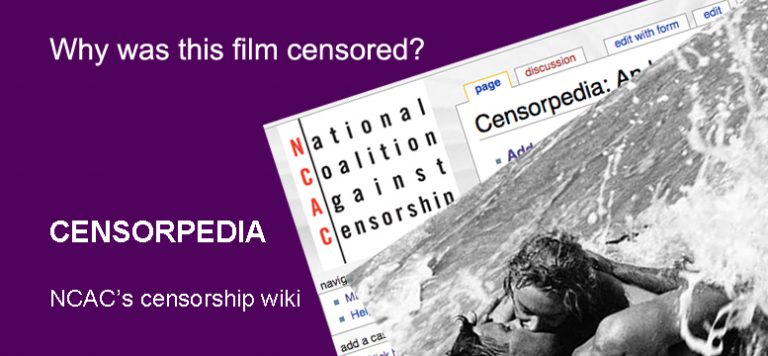
On the occasion of Human Rights Day, on Saturday December 10th, NCAC is launching Censorpedia, a crowdsourced wiki with an in-depth focus on individual censorship incidents.
The United Nation’s annual Human Rights Day, which commemorates the UN General Assembly’s 1950 adoption of the Universal Declaration of Human Rights, calls on organizations and individuals to reflect on the progress that has been made, and the ways we have to go, in securing the inalienable protections each and every human being is entitled to.
On this day, NCAC, one of the oldest US civil liberties coalitions dedicated to protecting the right to freedom of expression, is proud to unveil Censorpedia, a tool enabling researchers, journalists, academics, students and anyone interested in free speech to explore
Censorpedia documents censorship globally, and features ongoing incidents as well as cases that date from as far back as ancient Greece. Researchers can search for a specific case, or browse by region, medium, or grounds for censorship. Whether you are interested in the latest case from Tibet, an ongoing case in Egypt, early 20th century film censorship, or the extent to which racial tensions affect creative freedom, you can find answers in Censorpedia.
Censorpedia's database is crowdsourced, and its userbase includes anyone researching censorship, such as activists working for freedom of expression, journalists, academics, students, artists, and all cultural producers whose expression has been subject to or threatened by censorship. Cultural producers are invited to add cases where they are directly involved, but anyone can contribute an entry whether it is for an ongoing case or one that has been resolved; all cases need to be documented by referencing source materials.
Censorpedia currently contains over 1200 individual incidents collected over the years and contributed by students, NCAC staff and volunteers, as well as artists. The project brings the ideas and passion behind the landmark 1994 art project The File Room to a new generation of activists interested in human rights and creative freedom. (TFR is a project of artist Antoni Muntadas, which NCAC maintained and upgraded from 2001 to 2016, when it was successfully moved to its new home at the new media art organization Rhizome).
For more information about censorship, visit our Annotated Bibliography of censorship.

